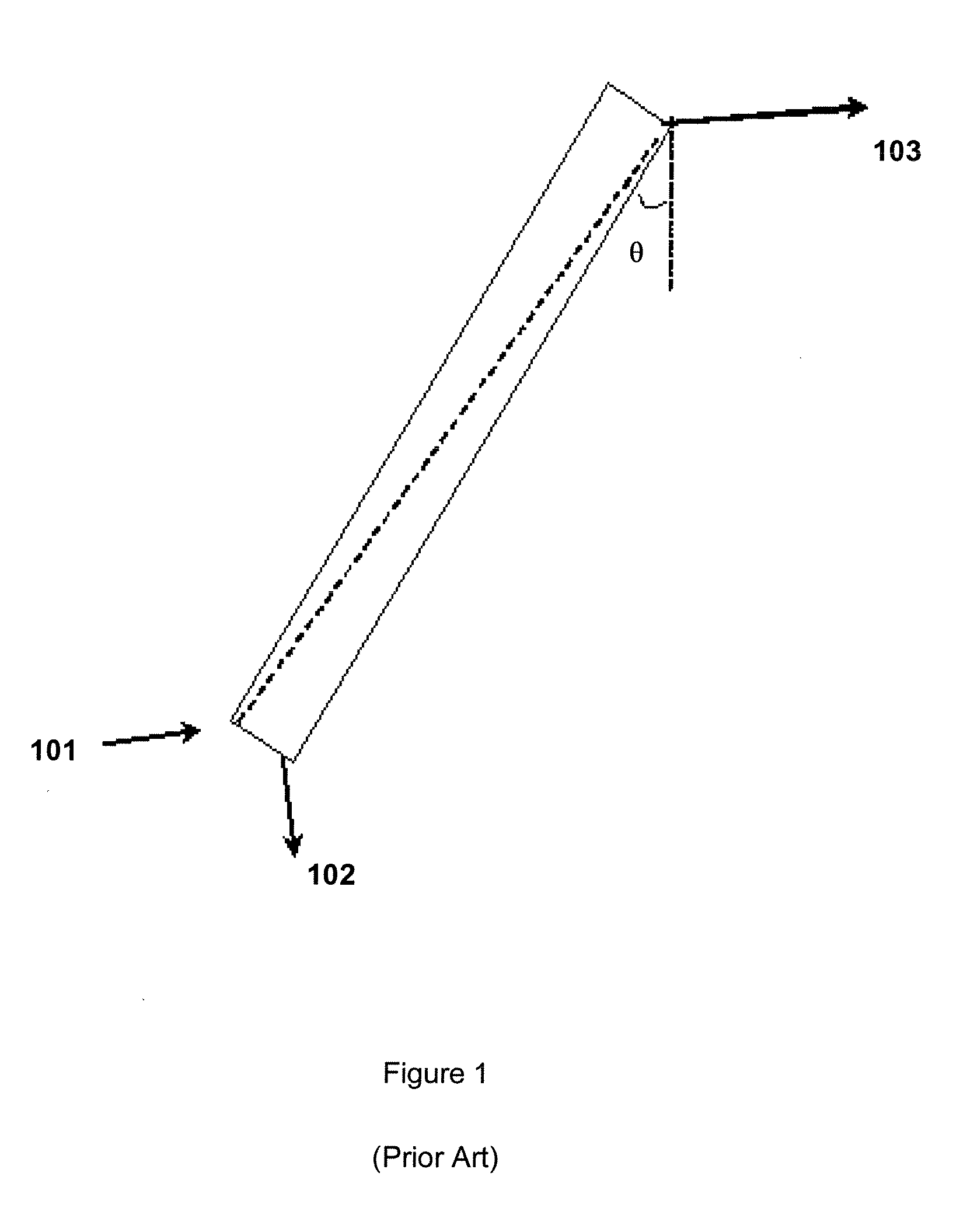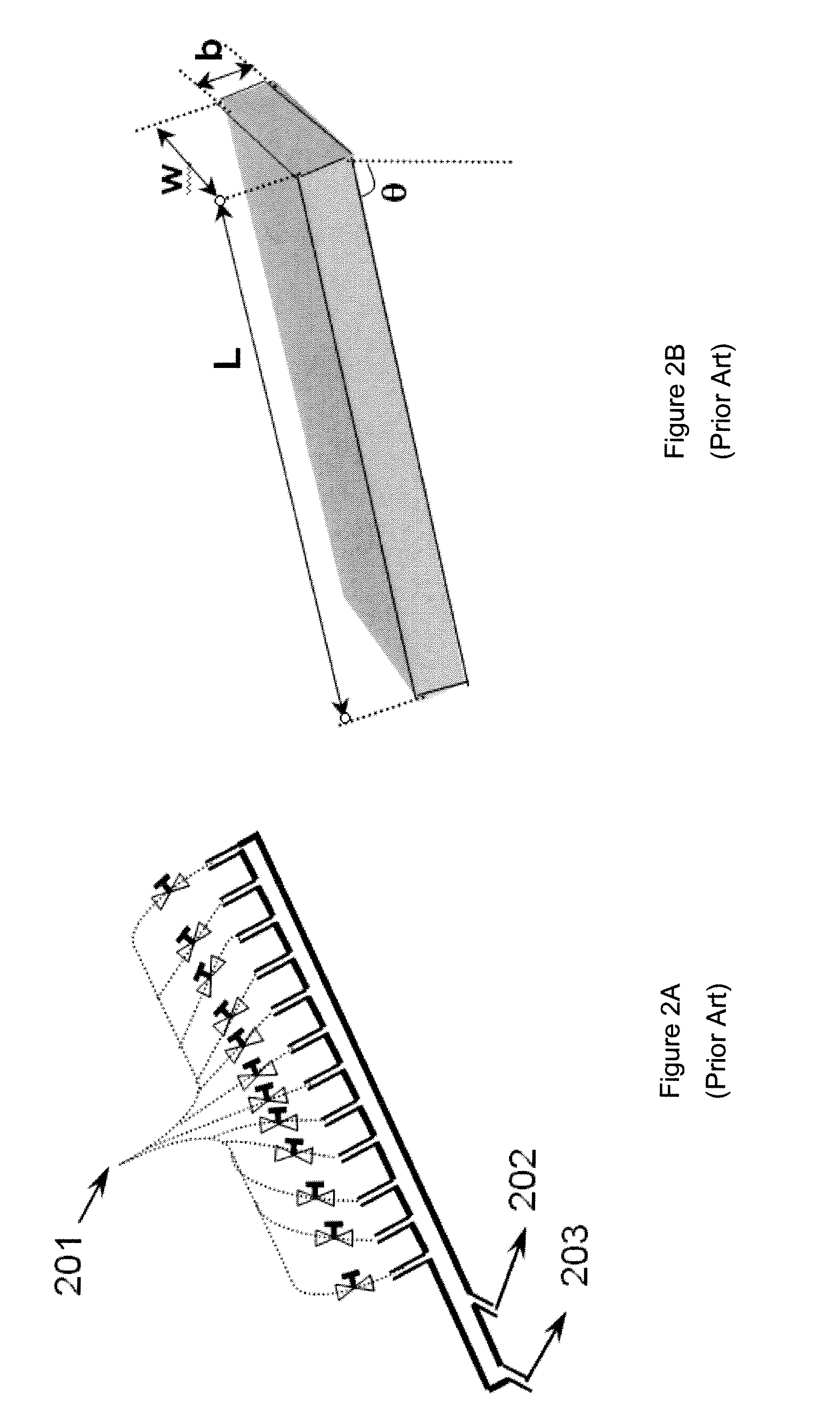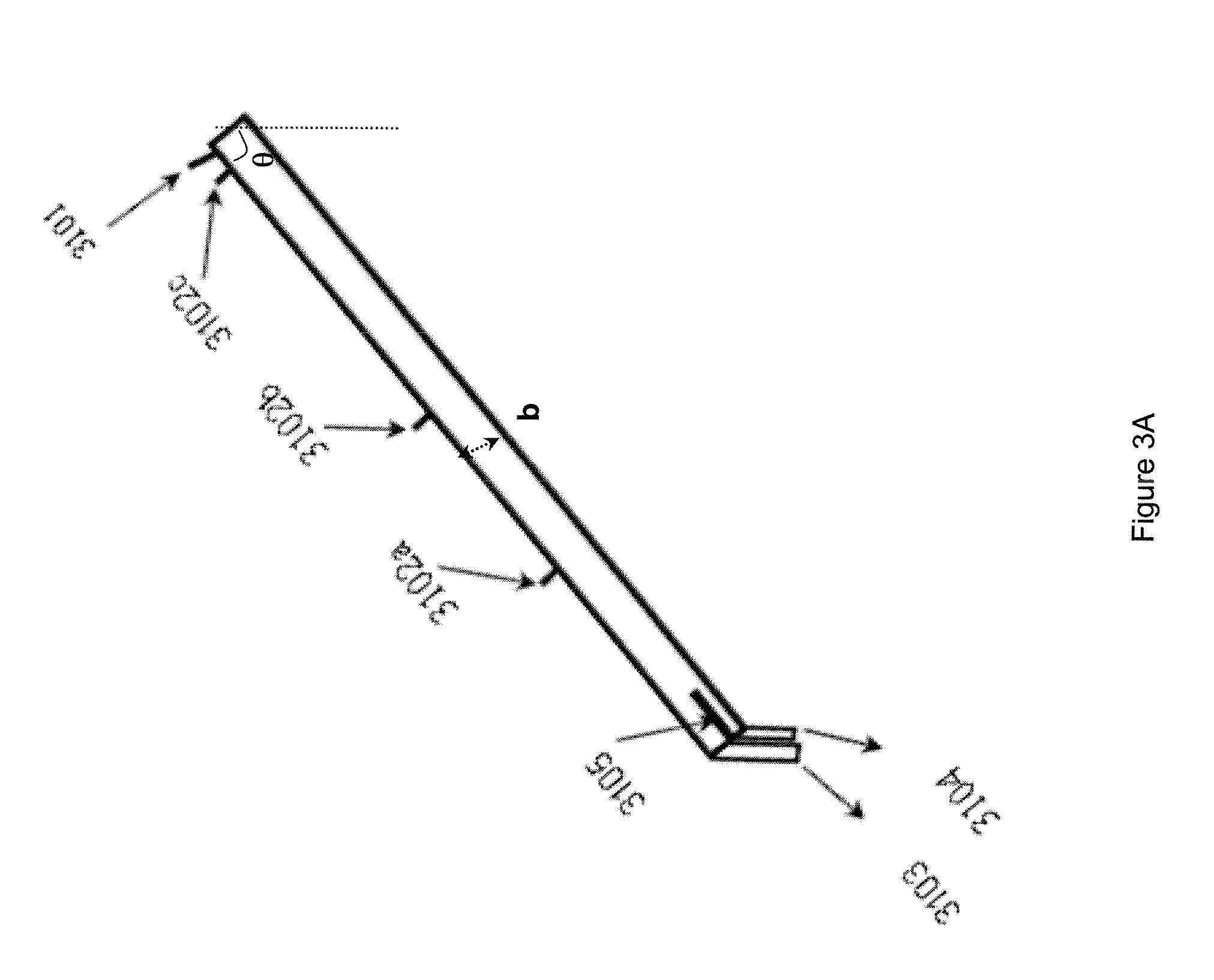Separating device, an algae culture photobioreactor, and methods of using them
a technology of algae culture and separation device, which is applied in the direction of specific use bioreactor/fermenter, microorganism after-treatment, etc., can solve the problems of high cost, high settling speed, and inability to effectively retain cells, etc., and achieves the effect of high settling speed and high settling speed
- Summary
- Abstract
- Description
- Claims
- Application Information
AI Technical Summary
Benefits of technology
Problems solved by technology
Method used
Image
Examples
example 1
10 L / Day Device
[0089]This example provided a gravity settler with a typical capacity of about 10 L / day (hereinafter “the 10 L / day device” for simplicity). FIG. 3A schematically shows the side view of the 10 L / day inclined gravity settler including air vent 3101, three inlets (3102a, 3102b, and 3102c), port 3103 to harvest, port 3104 to bioreactor, and separator 3105. Sometimes inlet 3102a, inlet 3102b, and inlet 3102c are also referred to as inlet I, inlet II, and inlet III respectively. FIG. 3B schematically shows the top view of the 10 L / day inclined gravity settler. Like Wang and Tan (which is herein incorporated by reference in its entirety), the cell separation capacity is adjusted by selecting different inlets along the longitudinal axis.
[0090]There are at least two differences between the 10 L / day device and the device in Wang and Tan. First, the outlet in Wang and Tan (as shown in FIG. 2) for cells returning to the bioreactor is located upstream of the outlet for harvest tan...
example 2
200 L / Day Device
[0092]This example provided a gravity settler with a typical capacity of about 200 L / day (hereinafter “the 200 L / day device” for simplicity). This device has the same design of the outlets as the 10 L / day device. Similar to Example 1, FIG. 4A schematically shows the side view of the 200 L / day inclined gravity settler including air vent 4101, inlet(s) of cell suspension 4102, port 4103 to harvest tank, and port 4104 to bioreactor. FIG. 4B schematically shows the top view of the 200 L / day inclined gravity settler.
[0093]There are at least three differences between the 200 L / day device and the 10 L / day device. First, the 200 L / day device has inlets only at one fixed distance along the longitudinal axis near the upper end of the settler, in line with the longitudinal axis, as opposed to the multiple inlet positions along the longitudinal axis in the 10 L / day device as well as Wang and Tan. Second, the 200 L / day device has multiple channels rather than a single channel. Th...
example 3
1000 L / day Device
[0094]This example provided a gravity settler with a typical capacity of about 1000 L / day (hereinafter “the 1000 L / day device” for simplicity). Similar to Examples 1 and 3, FIG. 5 schematically shows the side view of the multi-layer inclined gravity settler with shared plates. A difference between this device and the 200 L / day device is that the capacity of the 200 L / day device is scaled-up to 1000 L / day by stacking several of 200 L / day settlers together. As shown in FIG. 5, the same plate is shared between two settlers, serving as the settling surface in the upper settler, and the upper surface of the lower settler. In this way, the set of settlers will occupy a smaller volume and the material cost can be reduced by almost one-half.
[0095]The three devices shown in FIGS. 3, 4, and 5 have been designed for specific working capacities and cell properties. The same design and operating principles of the inventions can be used to construct devices for a large range of w...
PUM
| Property | Measurement | Unit |
|---|---|---|
| size | aaaaa | aaaaa |
| angle | aaaaa | aaaaa |
| settling speed | aaaaa | aaaaa |
Abstract
Description
Claims
Application Information
 Login to View More
Login to View More - R&D
- Intellectual Property
- Life Sciences
- Materials
- Tech Scout
- Unparalleled Data Quality
- Higher Quality Content
- 60% Fewer Hallucinations
Browse by: Latest US Patents, China's latest patents, Technical Efficacy Thesaurus, Application Domain, Technology Topic, Popular Technical Reports.
© 2025 PatSnap. All rights reserved.Legal|Privacy policy|Modern Slavery Act Transparency Statement|Sitemap|About US| Contact US: help@patsnap.com



